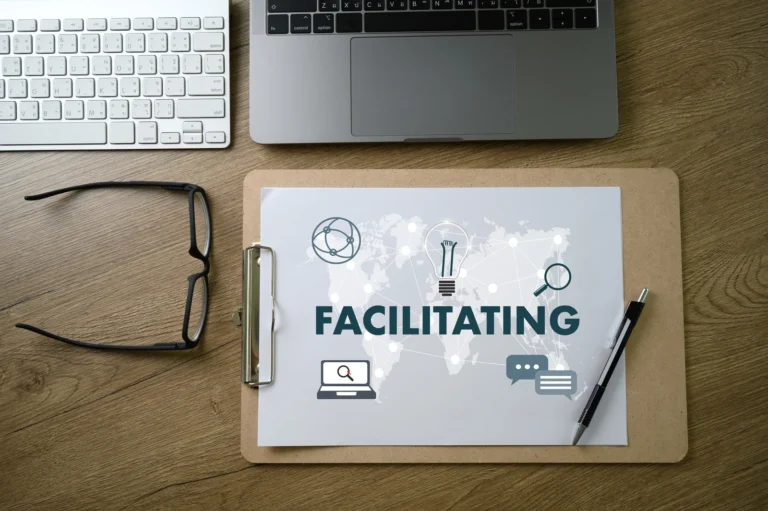A short answer would be that a facilitator is a person who guides and manages group meetings and discussions in order to achieve certain, previously determined goals.
But to dive even deeper into the topic, we need to understand how exactly a facilitator is supposed to act. The most crucial aspect of this role is to serve as a neutral party, promote open communication among group members, and make sure that all participants’ opinions are not only heard but also valued. If we were to draw a comparison to a more “traditional” profession, it would probably be a mediator – a neutral third party that assists others in reaching an agreement. The difference is that while in mediation, you typically deal with participants having different objectives, in facilitation, the main goal is shared among every team member. Whether it’s coming up with new ad campaign ideas or creating a fresh interface for an online brand, it’s up to the team to determine.
As you may probably guess, a facilitator typically shouldn’t take an active role in the conversation or provide solutions (even though it might be tempting sometimes). Their purpose is to support a team and help them make their own steps toward success, all while balancing between encouraging active participation and producing real results.
But… If the team has to come up with their own ideas, why would they need a facilitator? Let us explain.






